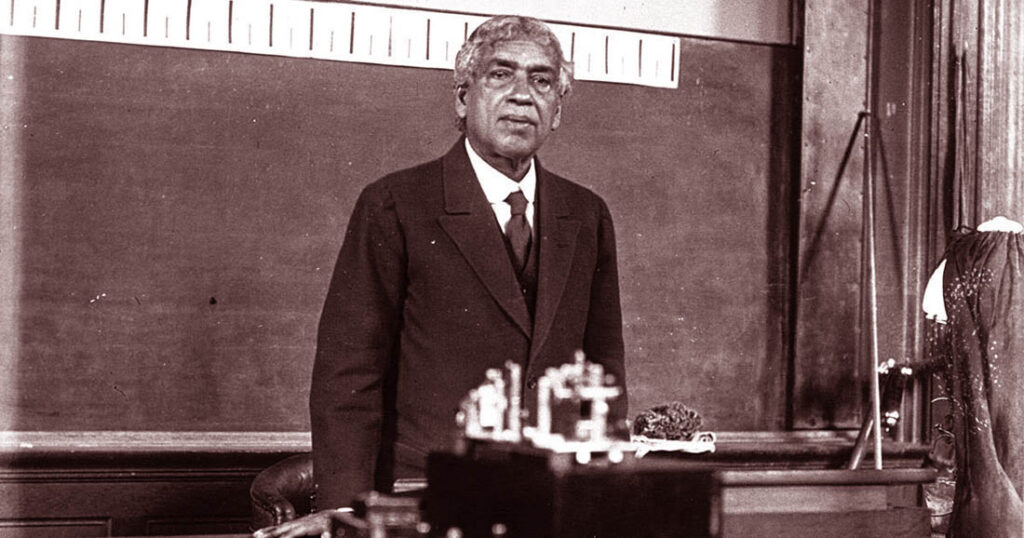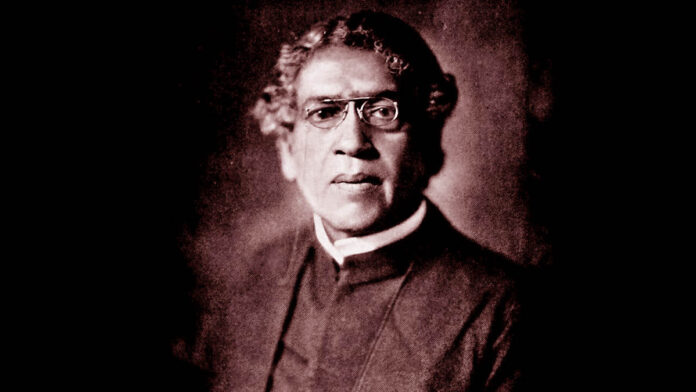In the annals of scientific history, the name Acharya Jagadish Chandra Bose stands as a beacon of innovation and discovery. Born on November 30, 1858, in Mymensingh, Bengal (now in Bangladesh), Bose was a polymath whose groundbreaking work encompassed multiple disciplines, including physics, botany, and wireless communication. This biography explores the remarkable life and enduring contributions of a man who bridged the gap between science and nature.
Page Contents
Early Life and Education
Jagadish Chandra Bose was born into a family deeply rooted in Indian culture and education. His father, Bhagawan Chandra Bose, was a well-respected leader in the local community, and his mother, Abala Bose, was a devout and progressive woman who actively promoted women’s education.
Young Jagadish displayed an early aptitude for science and was encouraged by his parents to explore his interests. He attended the prestigious Hare School in Calcutta (now Kolkata) and later enrolled in St. Xavier’s College. His fascination with the natural world grew during these formative years, inspiring him to pursue a career in science.
Read Also : Albert Einstein: Unravelling the Mysteries of the Universe
Journey to England
In 1880, Bose traveled to England to pursue higher studies in the field of natural sciences. He was admitted to Christ’s College, Cambridge, where he encountered cutting-edge scientific research and scholars. During his time in England, he conducted experiments on the polarization of electric waves, laying the groundwork for his future contributions to the field of wireless communication.
Pioneering Work in Plant Physiology
Upon his return to India in 1885, Jagadish Chandra Bose embarked on a groundbreaking journey into the realm of plant physiology. He conducted pioneering experiments that demonstrated that plants, like animals, exhibit a response to external stimuli. His work proved that plants could feel, perceive, and respond to various factors such as light, heat, and mechanical stimulation.
One of Bose’s most significant contributions to this field was the development of the crescograph, a sensitive instrument capable of magnifying plant movements and reactions. With the crescograph, he could study the subtle responses of plants in real-time, unveiling the secrets of their physiological processes. His research challenged prevailing notions about the boundaries between the plant and animal kingdoms.
Scientific Collaboration and Recognition
Jagadish Chandra Bose’s groundbreaking work in plant physiology attracted the attention of the international scientific community. He collaborated with renowned scientists like Lord Rayleigh and John William Strutt, 3rd Baron Rayleigh, who greatly admired Bose’s scientific prowess.
In 1901, Bose became the first scientist to present his research findings at the Royal Society in London via wireless communication. He had devised a method of sending and receiving electromagnetic waves without the use of wires, a significant precursor to the development of modern wireless technology.

Wireless Communication Innovations
Bose’s work in wireless communication was pioneering and prescient. He conducted experiments in microwave technology and designed a wireless telegraphy device that could transmit signals over a distance. His research laid the foundation for the future development of radio technology.
However, Bose’s scientific principles were rooted in a spirit of collaboration and dissemination of knowledge rather than commercial gain. Unlike some of his contemporaries, he did not seek patents for his inventions, preferring to share his discoveries with the world.
Educational Reforms and Advocacy
In addition to his scientific work, Jagadish Chandra Bose was deeply committed to educational reforms and the promotion of scientific research in India. He believed in the importance of nurturing scientific curiosity from a young age and advocated for hands-on scientific education.
Bose founded the Bose Institute in Calcutta in 1917, a research center dedicated to the pursuit of interdisciplinary scientific investigations. He also authored numerous books and articles in both English and Bengali, making scientific knowledge accessible to a wider audience.
Cultural Impact and Legacy
Jagadish Chandra Bose’s work and character left an indelible mark on Indian culture and science. He demonstrated that scientific pursuit and innovation were not the exclusive domain of the West. His dedication to exploring the mysteries of the natural world inspired generations of Indian scientists to follow in his footsteps.
Bose’s pioneering work in plant physiology highlighted the interconnectedness of all living beings, fostering a sense of reverence for nature and the environment. He emphasized the need for ethical and sustainable practices in agriculture and forestry, ideas that remain relevant today.
Read Also : C. V. Raman: The Light of Science
Conclusion
Acharya Jagadish Chandra Bose’s life and contributions exemplify the boundless potential of human curiosity and the enduring quest for knowledge. His groundbreaking work in plant physiology and wireless communication transcended disciplinary boundaries and left an indelible mark on both science and culture.
Bose’s legacy as a scientist, inventor, and educator continues to inspire and guide future generations of scientists and innovators in India and around the world. His life story serves as a testament to the power of scientific inquiry and the profound impact that a single individual can have on the course of human knowledge and progress. Jagadish Chandra Bose, the polymath who bridged the realms of science and nature, remains a luminous figure in the history of science and a symbol of India’s scientific prowess.


